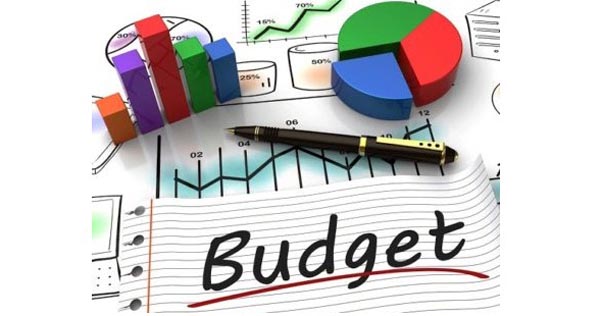LAHORE: “This is a budget with some realistic, some fanciful numbers, and more than a dash of electioneering.” This was stated in the review of the budget 2018-19 by the Institute for Policy Reforms (IPR). Despite claims that the budget is a strategic breakthrough in economic policy, measures in the budget are tepidly lacking a coherent strategy.
The review read “The government takes credit for the revival of GDP growth rates, however, several developments, such as recovery of world economies from the 2008 financial crisis, low energy prices, growth in world trade, improved security in Pakistan, and large-scale investment in infrastructure from China helped Pakistan’s economic growth. Yet, despite these favourable developments, the government has not placed the economy on a sustained growth path.”
The economy’s fundamentals are weak, especially its external sector with a runaway current account deficit. The government so far has no response on how it will manage the external account. Its estimate that imports will grow by just 4.8 per cent is unrealistic, added the review issued by IPR.
For FY19, government forecasts a growth rate of 6.2 per cent, meanwhile, the fiscal deficit is targeted at 4.9 per cent of GDP. IPR added that the government has clearly made a policy transition from stability to growth; this would change if the vulnerable external sector makes Pakistan knock on the doors of the IMF again.
With unprecedented growth in revenue in the last three years, FBR’s performance has helped limit budget deficit. Revenue is targeted to grow by a further 12.7 per cent in FY19, despite wide-scale tax relief. The budget estimates 114 per cent increase in non-tax revenues. “We have to see if this is because of higher energy prices or the government plans to increase the rate of petroleum levy,” it added.
Other aspects would negatively affect the deficit, read the review while adding, the budget estimates a provincial surplus of Rs285 billion in FY19, however, this is very unlikely to happen. Actuals for several expenditure heads will exceed budgeted estimates. These include the minor increase in current expenditure, especially with the increase in pay and pension, and need for PSEs subsidy.
In fact, virtual closure of Pakistan Steel Mills (PSM) and continued losses in Pakistan International Airlines (PIA) are avoidable. Power sector subsidy is still high. Line losses and less recovery of bills have not improved in five years. Each new unit of power generated needs subsidy. The budget for markup payment seems below need, as central government debt has increased rapidly and the share of high-cost commercial debt has increased in borrowing, the review noted. It added, all these will stress the fiscal framework and make it difficult to stay within the deficit target. In any case, the deficit does not include over Rs900 billion in circular debt which is a liability that must be paid.
The review document highlighted the fact that to limit fiscal deficit, the government has drastically reduced PSDP. Development expenditure has been reduced to Rs800 billion, whereas defence has grown to Rs1,100 billion. Also, there are signs that private investment is stable or declining. Machinery imports have declined and just 10 per cent of bank credits for businesses go to fixed investment. Yet the government expects growth rates to increase to 6.2 per cent.
The macro framework also plans to reduce Net Public Debt from the present 70 per cent of GDP to 63.2 per cent. The budget does not say how this will happen, especially as budget deficit this year would likely be 5.5 per cent and 5 per cent or more next year, IPR questioned.
Two recent developments hold promise, though their success is by no means guaranteed. National water policy could conceivably help with much-needed policy and infrastructure interventions. The tax amnesty could begin a process of documentation of the economy. Overall to build economic dynamism, policymakers need to do a lot more to build competitiveness and productivity.
There are several concerns with the effective use of PSDP, which is now a paltry 2.4 per cent of GDP. Almost 25 per cent of PSDP is for highways whose economic benefit is unproven. There is also a large component of discretionary special schemes totalling Rs232.5 billion or a quarter of the development budget. This is nothing but politicisation of development funds. In essence, the federal PSDP is Rs568 billion rather than Rs800 billion, the review argued.
The Pakistan economy has been in low to moderate growth for several years. The people of Pakistan expect jobs and economic activity to grow. Serious infrastructure gaps and social deficit constrain business development and depress living standards. They are important for providing stimulus to the economy as well as to enhance business competitiveness, the report concluded.





This is an hurriedly prepared budget for which Dr.Miftah Ismail and his team is taking credit. In simple words they have played an havoc with the country’s weak economy. While with the past five years published figures no sustainable growth is seen their claim of stable economy is not more than a joke. soaring external debts, vanishing FC reserves, increasing imports and decrease in exports, highly inflated exchange rates are the key indicators through which economic trend of the country can be adjudged very easily and with this collapsing economic figures presenting an heavily manipulated budget is a clear sign that the present government is not capable to address the deteriorated economic conditions and this is going to be a failed budget.